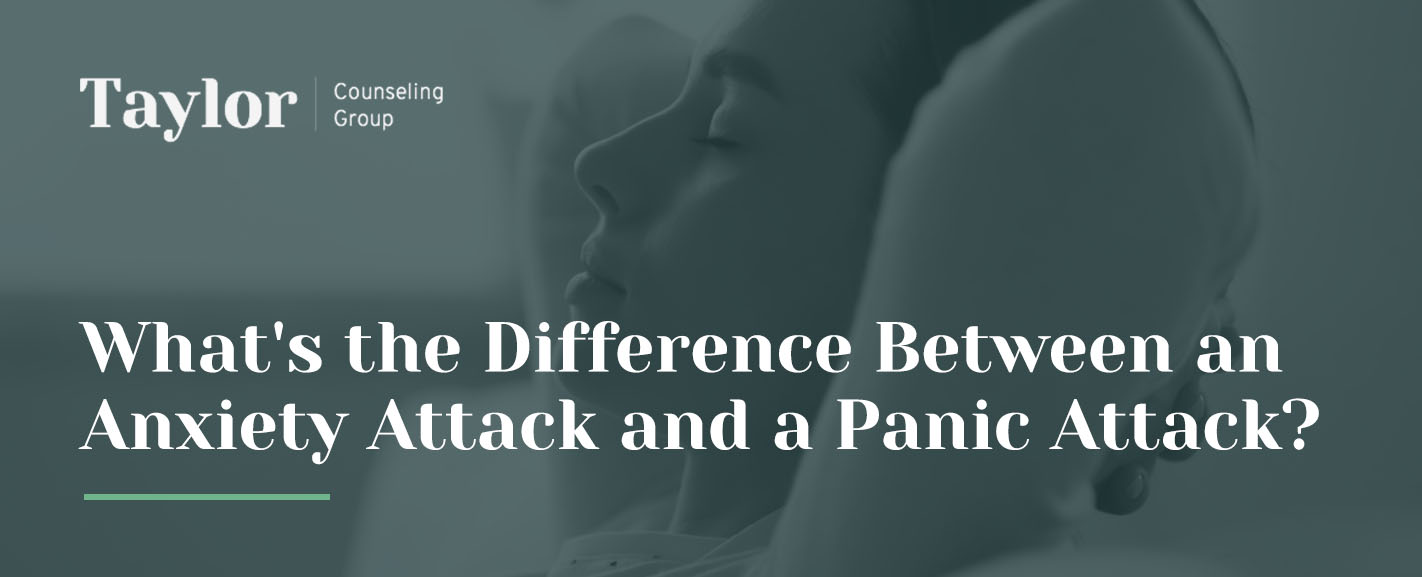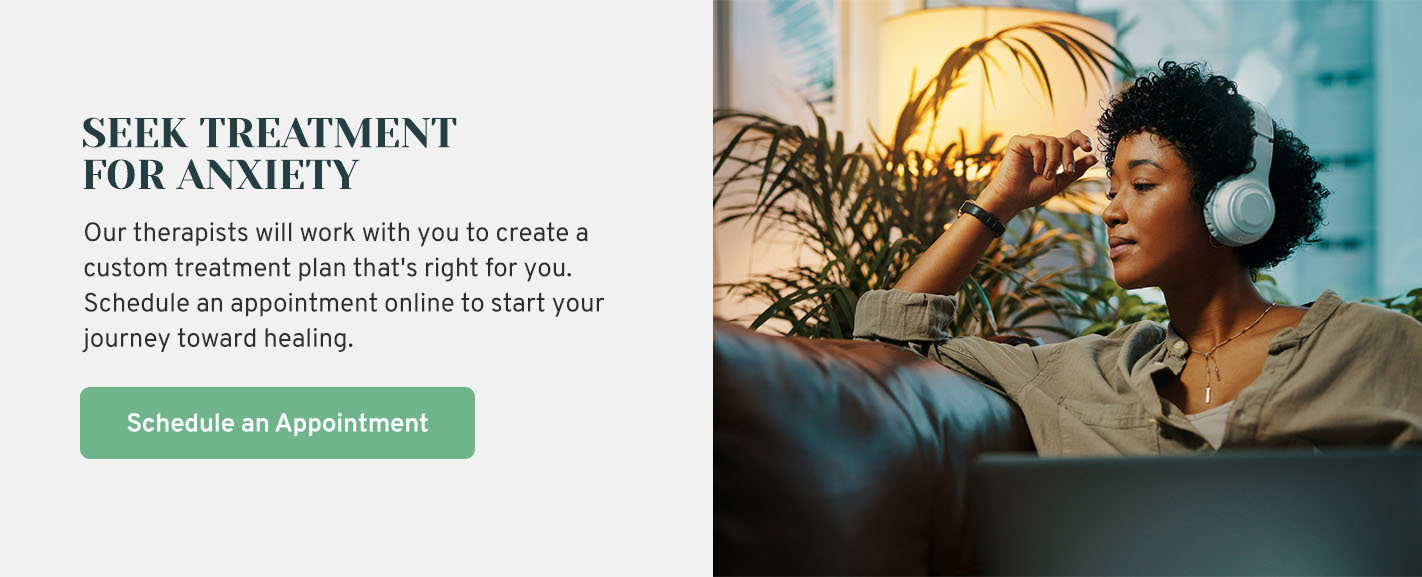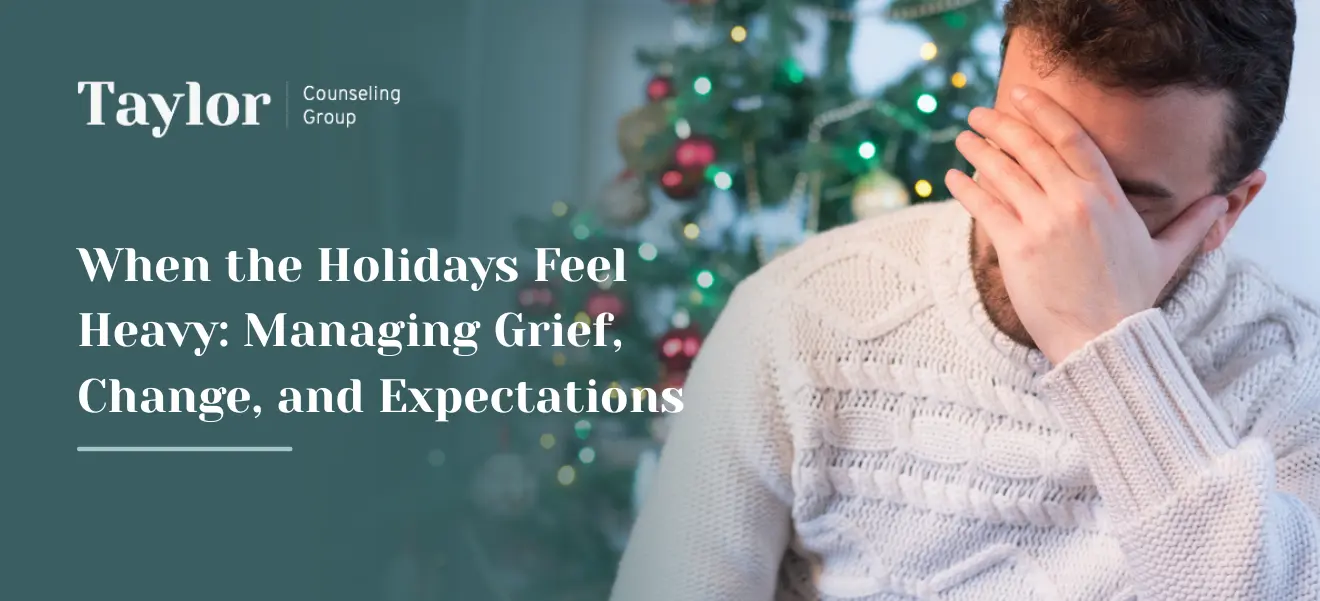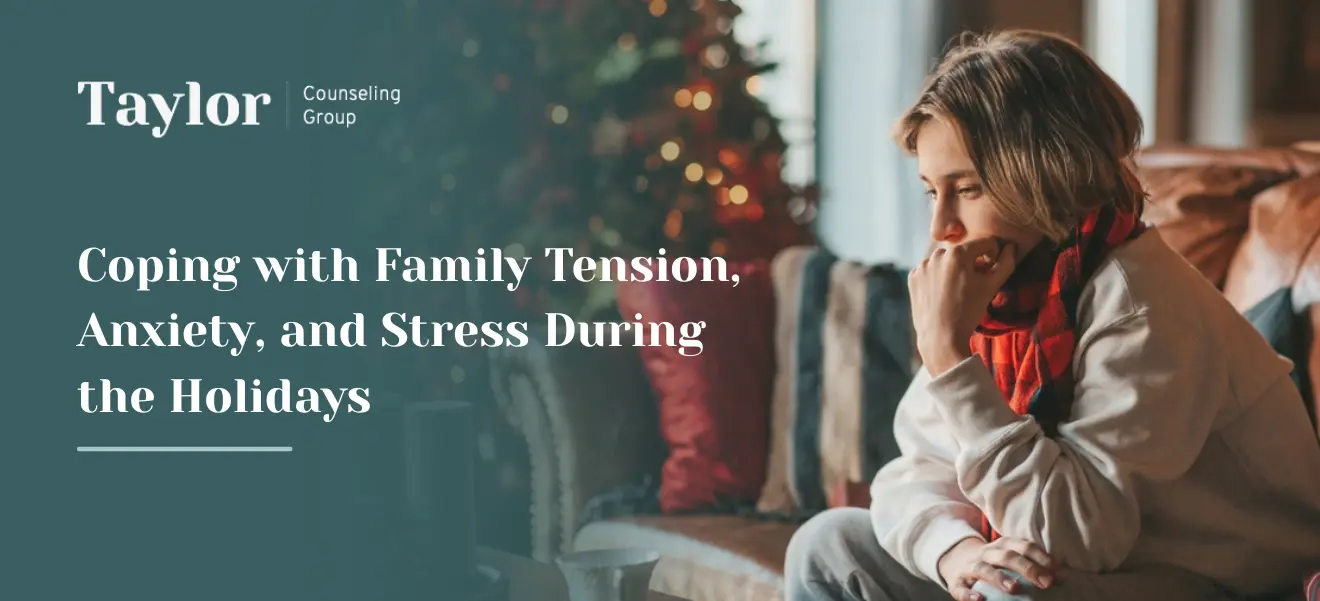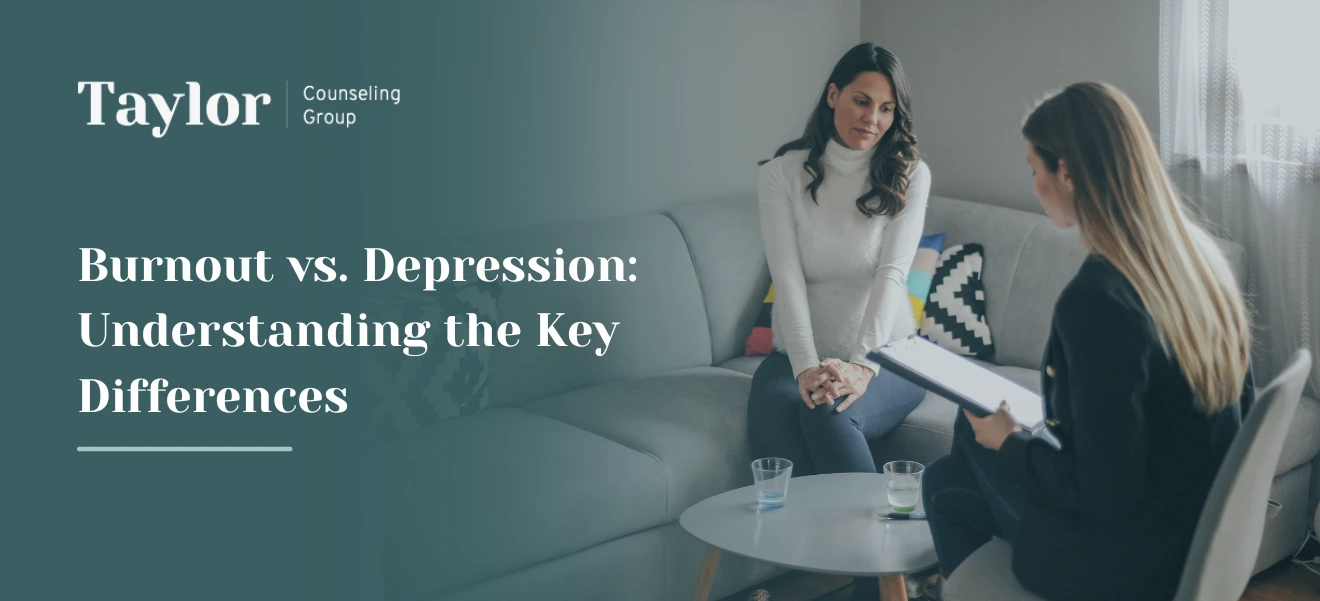Anxiety attacks and panic attacks are similar because they center on fear and worry. However, there are significant differences between these two types of bodily responses to stress. Even though anxiety and panic attacks can feel overwhelming and disrupt your day, there are ways to manage them and return to a relaxed state.
In this post, we’ll go over the differences between anxiety and panic, as well as recommend coping strategies to help you regain control over your well-being.
Symptoms of an Anxiety Attack
Anxiety attacks are the body’s response to a slow accumulation of worry and stress. Depending on the type and degree of stress, the symptoms of an anxiety attack can vary from person to person.
The main symptom is psychological distress, but other common signs of an anxiety attack can include the following:
- Muscle tension: Persistent tightness, stiffness, or soreness in your neck, shoulders, and back is a common physical symptom of anxiety attacks.
- Fatigue: Ongoing stress can leave you feeling exhausted, even without physical activity.
- Trouble falling or staying asleep: Racing thoughts and physical discomfort make it difficult to sleep, a frequent issue in stress and mental health concerns.
- Headaches: Tension headaches caused by prolonged stress may feel like pressure around your temples.
- Increased heartbeat: Your heart may beat faster than usual, which is a classic fight or flight response.
- Rapid breathing: Shallow, quick breaths can trigger lightheadedness and discomfort.
- Chills or sweating: You might experience sudden sweating or chills without much reason.
- Irritability: Everyday frustrations may feel amplified and make you more reactive to minor stressors.
- Trouble concentrating: Anxiety attacks and intrusive thoughts can make it hard to focus, leading to mental fatigue and difficulty processing information.
These symptoms are not harmful themselves, but frequent anxiety attacks can be distressing and interfere with your ability to function in your daily tasks and responsibilities. Anxiety attacks aren’t listed in the Diagnostic and Statistical Manual of Mental Disorders (DSM-5), but frequent episodes may indicate an underlying anxiety disorder that could benefit from professional support.
Book An Appointment Today! Our Therapists
Symptoms of a Panic Attack
Panic attacks differ from anxiety attacks because they occur suddenly and without any signs or warning. A panic attack is a rush of extreme fear, and it can happen as a reaction to something you fear, or it can happen when there is no identified reason to be afraid.
Panic attacks can even occur when you’re asleep. They’re considered the body’s false alarm because the attack activates the body’s fight-or-flight response and intensifies it, even when there is no danger.
While anxiety attacks can feel unnerving and uncomfortable, panic attacks are much more intense. Anxiety attacks are difficult to manage, but people can persevere through them. Panic attacks, however, can feel almost impossible to push through. When a person experiences a panic attack, they may feel as if they are having a heart attack, dying or going crazy.
Panic attack symptoms include the following:
- Dizziness or feeling light-headed: You may suddenly feel off balance or faint, which is often triggered by rapid breathing or hyperventilation.
- A feeling of being disconnected from the real world: It may seem like everything around you is unreal, almost as if you’re watching yourself from the outside.
- Pounding heart: Your heart may race or pound so hard that it feels like it’s trying to jump out of your chest, one of the most distressing physical symptoms of panic.
- Chest pain: You may feel tightness, pressure, or a sharp pain in your chest. Many people mistake this sign of a panic attack for a heart attack.
- Shortness of breath: Breathing may feel difficult, shallow, or even impossible, which can lead to panic spiraling out of control.
- A feeling of choking or tightness in the throat: You might feel like you can’t swallow or like something is stuck in your throat.
- A sense of imminent danger or doom: A sudden, overwhelming feeling that something terrible is about to happen.
- Nausea and abdominal pain: Panic can have a strong effect on digestion. You may experience nausea, stomach cramps, or vomiting as your body reacts to heightened stress and fear.
- Sweating or chills: You might suddenly feel hot and start sweating, or you may feel an unexpected wave of chills, even if the temperature is normal.
- Shaking or trembling: Your hands, legs, or entire body may shake uncontrollably as adrenaline floods your system.
- Tingling or numbness: You may experience a pins-and-needles sensation or numbness in your hands, arms, or face.
For a healthcare professional to diagnose panic disorder, a person must experience four or more symptoms. However, not everyone will experience all listed symptoms during a single panic attack. These symptoms are not life-threatening, but the intense fear during a panic attack can worsen symptoms. People will usually experience symptoms at their worst a few minutes after a panic attack begins, but panic attacks will usually only last about 20 minutes or an hour at the most.
If you experience a panic attack with symptoms that last longer than an hour, it’s important to seek emergency care. Most people will only experience one or two panic attacks in their lifetime and can manage them on their own, but if you are experiencing recurrent panic attacks, it may be helpful to seek professional care.
What Causes a Panic Attack or Anxiety Attack?
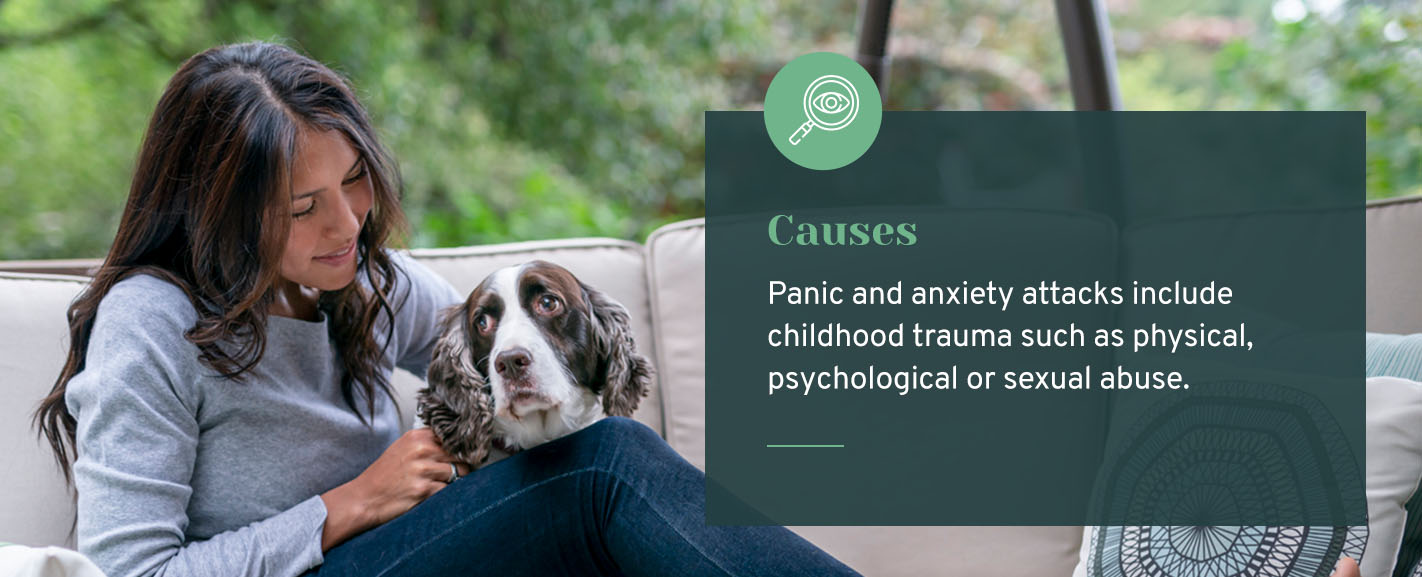
The causes of panic attacks and causes of anxiety attacks can vary.
Recurrent panic and anxiety attacks can indicate an anxiety or panic disorder in some people, but others who have a panic attack will only experience it once or twice in their lifetime. Medical conditions such as heart disease or hyperthyroidism can cause anxiety and panic attacks, and certain medications such as steroids and asthma medications can contribute to them as well.
Trauma is another common cause of panic attacks. This can include childhood trauma such as physical, psychological or sexual abuse. It can also include traumatic events such as sexual assault or serious accidents. Other stressful events, even happy ones, such as career changes, divorce, a serious illness or a new baby can cause anxiety and panic attacks in some people.
Some people are more prone to panic attacks than others. Genes can play a role in mental health. A family history of anxiety-related conditions increases the risk of experiencing anxiety attacks or panic attacks.
Certain health habits such as alcohol use, caffeine intake, smoking and drug use can also make a person more likely to experience anxiety or panic attacks.
Phobias, such as fear of heights (acrophobia) or fear of crowded spaces (agoraphobia), can also trigger anxiety and panic attacks. Fears like agoraphobia, the fear of open or crowded spaces, and acrophobia, the fear of heights, can cause people to experience panic attacks in certain situations that trigger their specific fear.
Social anxiety can cause panic attacks to occur when fears arise in anticipation or during social situations. Many different fears can trigger anxiety or panic attacks.
Finally, everyday stress and anxiety triggers, especially major changes like job transitions, divorce, or having a child, can also contribute to the onset of anxiety attacks or panic attacks.
What to Do During a Panic or Anxiety Attack
Anxiety and panic attacks can feel overwhelming. Professional services such as individual counseling can help when anxiety regularly disrupts your daily life, but there are also things you can do to relieve your symptoms in the moment of an attack. The goal is to calm the body’s fight or flight response, and you can do this by practicing the following techniques:
Deep Breathing
Deep breathing can slow your heart rate, which helps to take your body out of the fight or flight response. To practice diaphragmatic breathing, you should take slow, deep breaths that fill your lungs with air and cause your chest and lower abdomen to rise. One way to do this is to inhale for a count of four seconds, hold for another count of four seconds and exhale for a count of eight seconds. Repeat this pattern until you feel calm again.
Muscle Relaxation
Making conscious efforts to reduce muscle tension can help to relieve anxiety and the body’s fight or flight response. Progressive muscle relaxation helps reduce physical symptoms of panic by releasing tension.
To practice this technique, tense a group of muscles in the body, such as your arms or leg muscles, and then release them. Take notice of the way your muscles feel relaxed as you do so. Repeat this process for other muscle groups until your body feels less tense and more relaxed.
Mindfulness
Mindfulness is the act of observing thoughts and feelings in the present moment without labeling them as bad or good. It involves awareness of thoughts and emotions as well as acceptance of these thoughts and emotions. You can practice mindfulness by meditating on your thoughts while focusing on deep breathing.
Seek Treatment for Anxiety
Anxiety and panic attacks can occur for many reasons. Sometimes, recurring attacks can indicate the presence of an anxiety or panic disorder. If managing panic attacks and anxiety attacks becomes overwhelming, seeking professional help can provide relief.
Taylor Counseling Group offers affordable therapy for anxiety and panic attacks to guide you toward better mental well-being. Our therapists will work with you to create a custom treatment plan that’s right for you. Schedule an appointment online to take the first step in reclaiming control over your stress and mental health.


